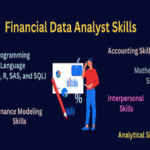Summary: Generative AI isn’t magic, but it learns like one! This powerful technology utilizes deep learning algorithms to analyze massive amounts of data, be it text, images, or code. Through a multi-step process, the AI extracts patterns and relationships within the data. This knowledge empowers it to create entirely new, realistic content, like generating human-quality images or composing original music. The process is iterative, with generated content informing further training and refinement, making generative AI a continuously evolving tool for various industries.
The realm of Artificial Intelligence (AI) is constantly evolving, pushing the boundaries of what machines can achieve. Generative AI, a subfield of AI, has emerged as a game-changer for content creation and various industries.
Unlike traditional AI focused on analyzing data, generative AI excels at creating entirely new, realistic data. This article delves into the world of generative AI, exploring its capabilities, impact on the world, and potential future.
Understanding Generative AI: How Does It Work?
Imagine feeding a vast amount of text to a machine, which not only comprehends it but also generates new, original text that resembles the original content. That’s the magic of generative AI. It utilizes Deep Learning algorithms, a specific type of machine learning inspired by the structure and function of the human brain.
These algorithms are trained on massive datasets of text, images, code, or audio. By analyzing the patterns and relationships within the data, the AI learns to create new outputs statistically similar to the training data.
Generative AI Process: From Data to Creation
Generative AI isn’t magic, but it can feel like it when a machine starts churning out realistic images or composing coherent text. The process behind this impressive feat involves several key steps:
Data Acquisition
The foundation of any generative AI model is a massive amount of data. This data can be anything the model needs to learn from – text documents for generating new writing styles, image libraries for creating realistic photos, code repositories for programming new functionalities, or even audio recordings for composing music.
Data Preprocessing
Raw data often needs some cleaning and organization before it’s fed to the AI. This might involve removing irrelevant information, standardizing formats, and ensuring data consistency. Preprocessing ensures the model receives clear and well-structured information for effective learning.
Model Training
This is where the magic happens. Inspired by the human brain’s structure and function, Deep Learning algorithms analyze the prepared data. They identify patterns, relationships, and underlying statistical properties within the data.
Imagine the AI meticulously studying thousands of cat pictures, learning the nuances of feline features, fur textures, and lighting conditions.
Content Generation
Once trained, the generative AI model is ready to create new content. It utilizes the learned knowledge to generate outputs that resemble the training data statistically.
Returning to our cat example, the model can now generate a brand new image of a cat, even though it has never seen that cat before. The generated image will be realistic and adhere to the patterns it learned from the training data.
Refinement and Feedback Loop
Generative AI models are constantly evolving. The generated content can be evaluated by humans or fed back into the training process to further refine the model’s capabilities.
This iterative process allows the AI to learn and improve its ability to create increasingly realistic and creative outputs.
Imagine this entire process as an artist studying countless paintings, internalizing techniques, colour palettes, and brushstrokes. Then, armed with this knowledge, the artist creates a brand new, original artwork.
Generative AI follows a similar learning and creation cycle, albeit faster and on a digital canvas.
Diagrammatic Representation of Generative AI Process
Generative AI in Action: Transforming Industries
The applications of gen AI extend far beyond mere content creation. Here are some key areas where generative AI is making waves:
Content Creation
This is perhaps the most well-known application. Generative AI can create realistic images, write different kinds of creative text formats like poems, scripts, musical pieces, and even translate languages.
Drug Discovery
In the life sciences field, gen AI can accelerate drug discovery by simulating potential molecules and their interactions. This can significantly reduce development time and costs.
Material Science
Generative AI can design new materials with specific properties, leading to battery technology and aerospace engineering advancements.
Financial Modeling
It can analyze historical financial data to create realistic simulations of future market trends, aiding in improved risk management and investment strategies.
Generative AI: Reshaping the Future of Work
The rise of generative AI raises a crucial question: will it replace human jobs? While automation is a concern, experts believe that gen AI is more likely to reshape work rather than replace it entirely. Here’s why:
Focus on Creativity
Generative AI excels at automating repetitive tasks, freeing up human workers to focus on higher-level cognitive tasks requiring creativity, critical thinking, and strategic decision-making.
Human-AI Collaboration
The future of work envisions a collaborative environment where humans leverage the power of generative AI to enhance their productivity and capabilities.
However, the ethical implications of gen AI cannot be ignored. The potential for bias in training data must be addressed to ensure fair and responsible use of this technology.
Key Statistics Highlighting the Generative AI Revolution
The impact of generative AI is undeniable, and its influence is poised to grow exponentially. Here are some key statistics that illustrate this trend:
Market Growth
According to Markets and Markets, the gen AI market is projected to reach a staggering $51.8 billion by 2028, reflecting a compound annual growth rate (CAGR) of 35.6%. [This statistic can be found in various market research reports. You can search for “Generative AI market size forecast]
Adoption Rate
A study by PwC suggests that 72% of business leaders believe AI will be a critical differentiator in their industries within the next three years. [Source: PwC AI Predictions 2022 report]
Looking Ahead: The Evolving Landscape of Generative AI
The future of generative AI is brimming with possibilities. Here are some exciting developments on the horizon:
Democratization of Creativity
Generative AI tools are becoming more accessible and user-friendly. This means creators of all skill levels, from artists and designers to marketers and entrepreneurs, can leverage AI to generate high-quality content like images, music, and text formats.
This trend empowers individuals to explore their creative potential and bring their visions to life without needing extensive technical expertise.
Hyper-Personalization with AI
Generative AI is moving beyond simple content creation towards personalization on a massive scale. Imagine AI tailoring marketing campaigns, educational materials, or product recommendations to your specific needs and preferences in real-time.
This level of personalization can significantly enhance user experiences across various industries.
AI-powered Content Automation
Repetitive tasks like generating product descriptions, writing social media posts, or creating basic video edits are prime targets for automation using generative AI. This frees up human resources for more strategic endeavors and allows for faster content production cycles.
As AI capabilities increase, the range of automatable content creation tasks will continue to expand.
Frequently Asked Question
What Exactly Can Generative AI Create?
Generative AI can produce a surprising range of creative outputs! It can generate realistic images of anything you can imagine, compose music in various styles, write different kinds of text formats like poems or scripts, and even design new products.
This makes it a valuable tool for artists, designers, marketers, and anyone looking to explore creative possibilities.
Is Generative AI a Threat to Creative Jobs?
While AI can automate some content creation tasks, it’s unlikely to replace human creativity entirely. Generative AI excels at generating variations and completing repetitive tasks. However, the human touch remains essential for original ideas, strategic direction, and ensuring the final output aligns with the desired purpose.
The future likely involves humans and AI collaborating, with AI handling the heavy lifting and humans providing the creative spark.
Should I Be Worried About AI-generated Deepfakes?
The ability to create realistic-looking fake videos using generative AI does raise concerns. However, several safeguards are being developed. Tools to detect deepfakes are improving, and open discussions are happening around ethical considerations for AI development.
By promoting responsible AI practices and staying informed, we can minimize the potential risks associated with generative AI.
Closing thoughts
Generative AI represents a significant leap forward in the field of Artificial Intelligence. Its ability to create entirely new, realistic data is transforming industries and reshaping the future of work. While concerns about job displacement exist, generative AI is more likely to act as a powerful tool, augmenting human capabilities and fostering a new era of human-AI collaboration.
As generative AI continues to evolve, with increased explainability, focus on social good, and wider accessibility, the possibilities for its positive impact on our world are truly boundless.










